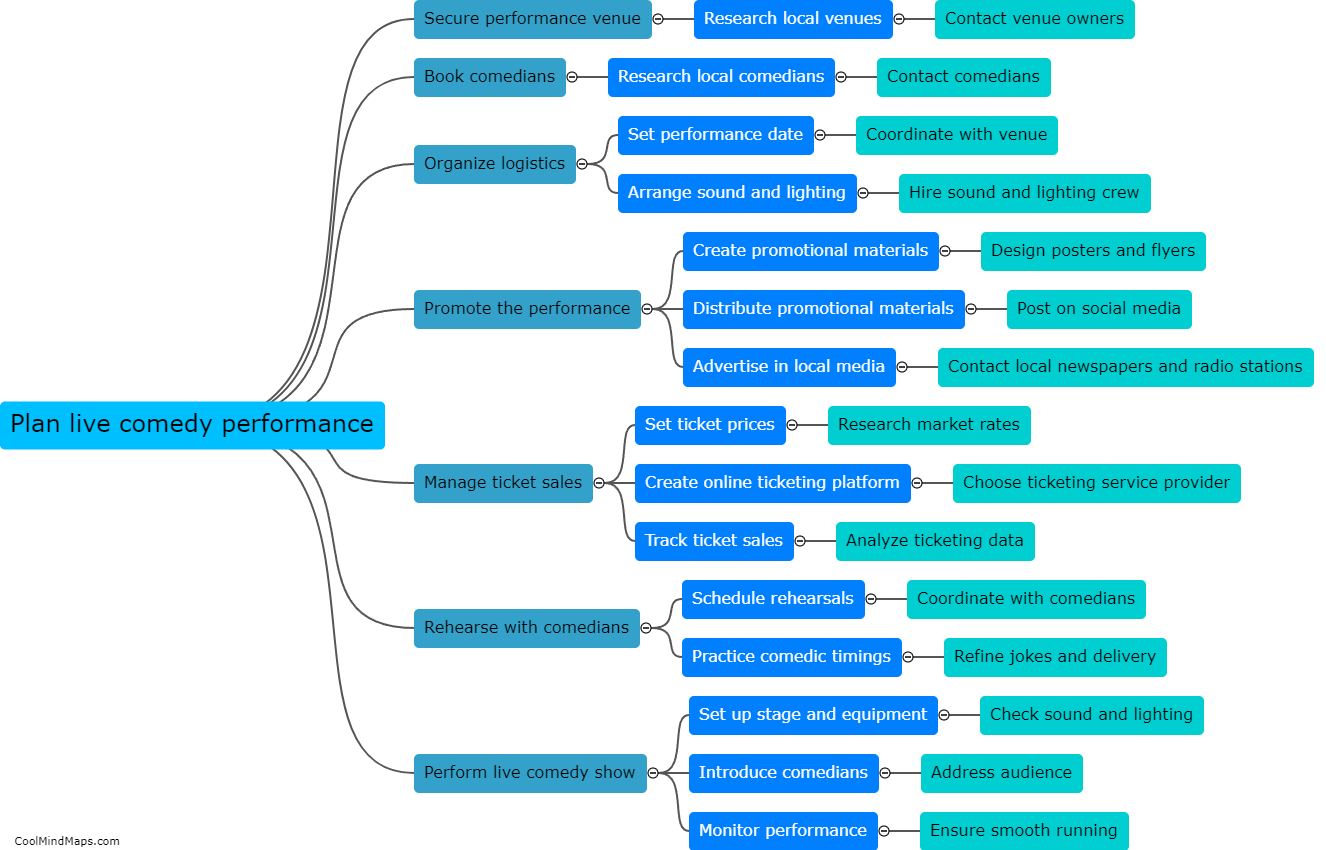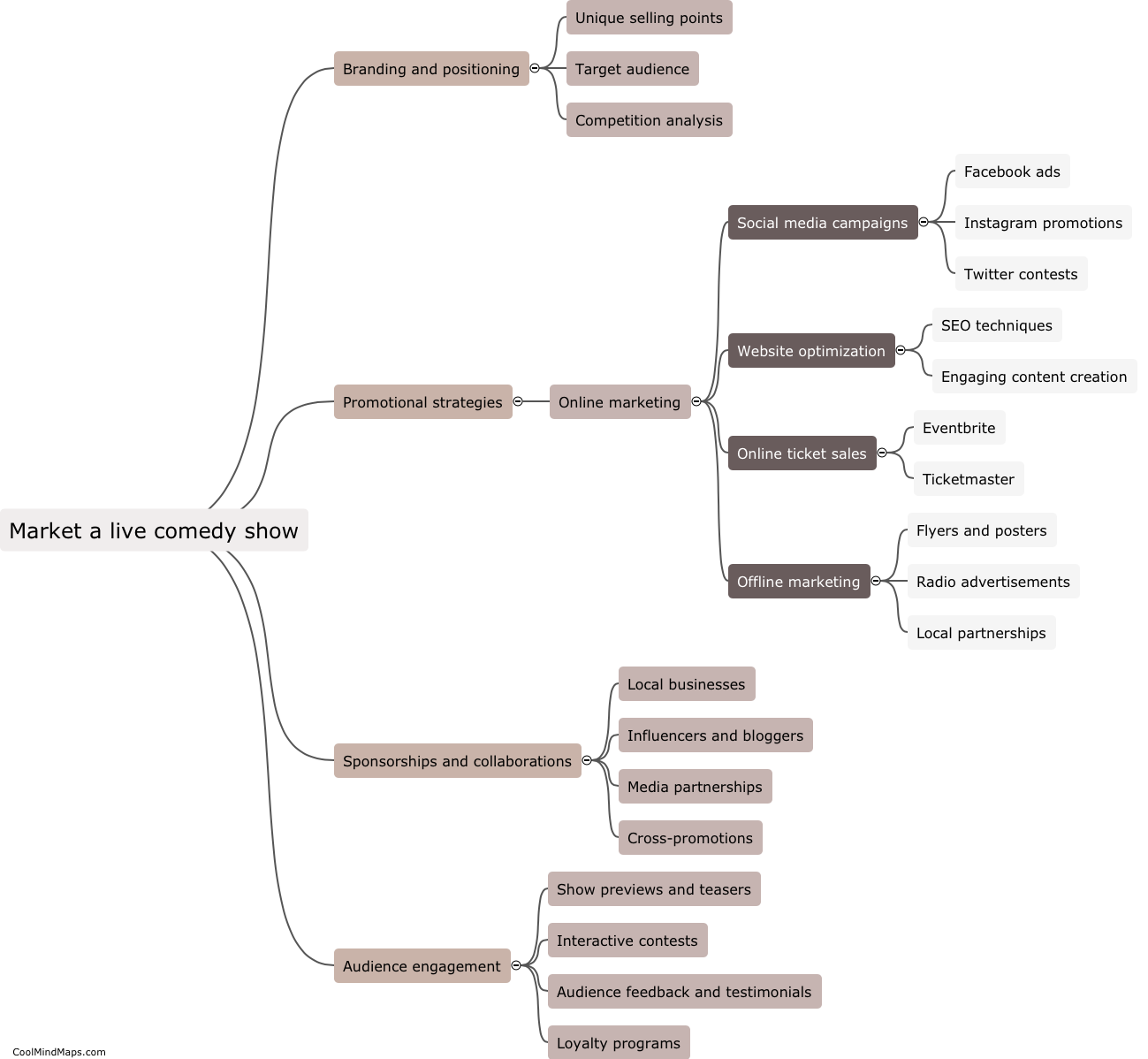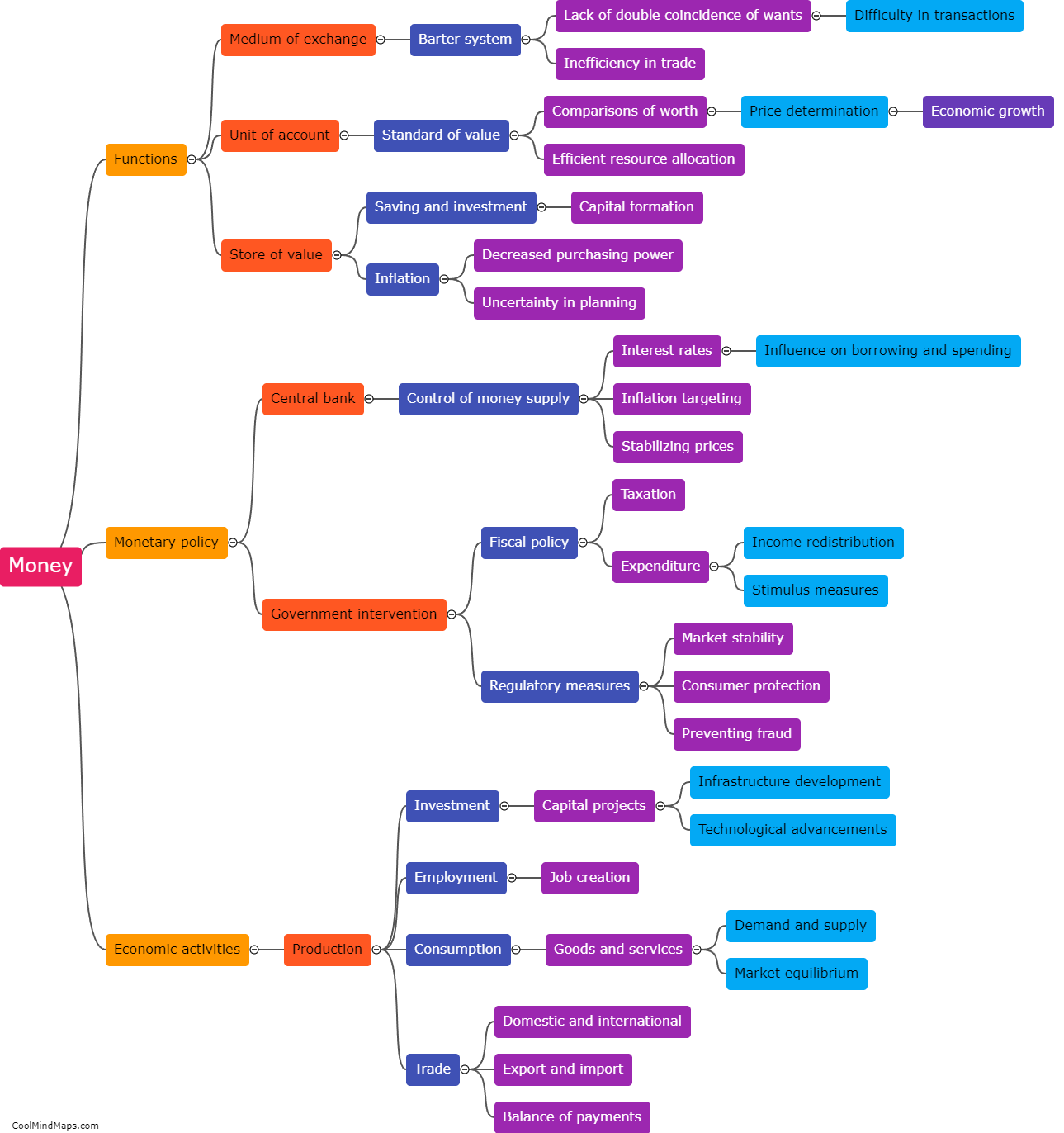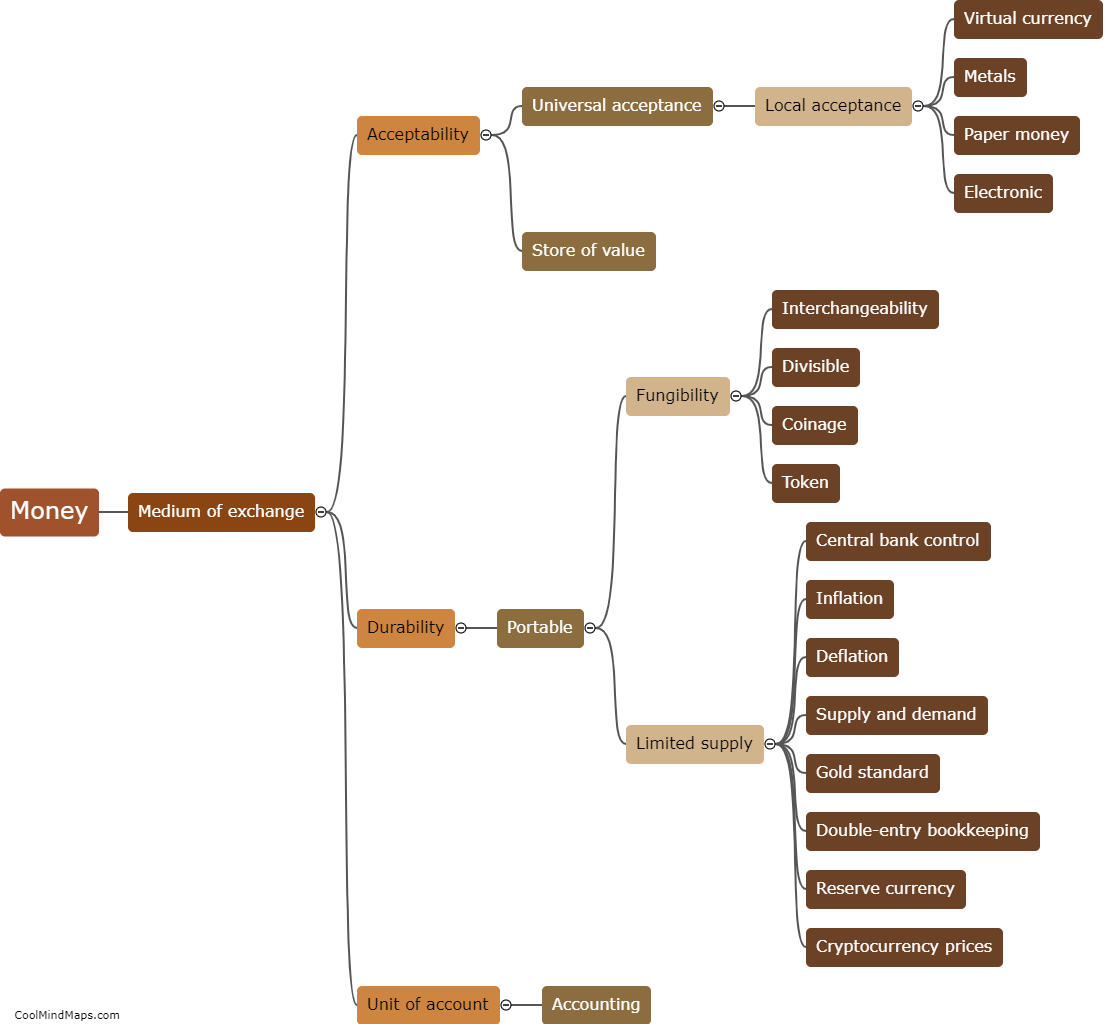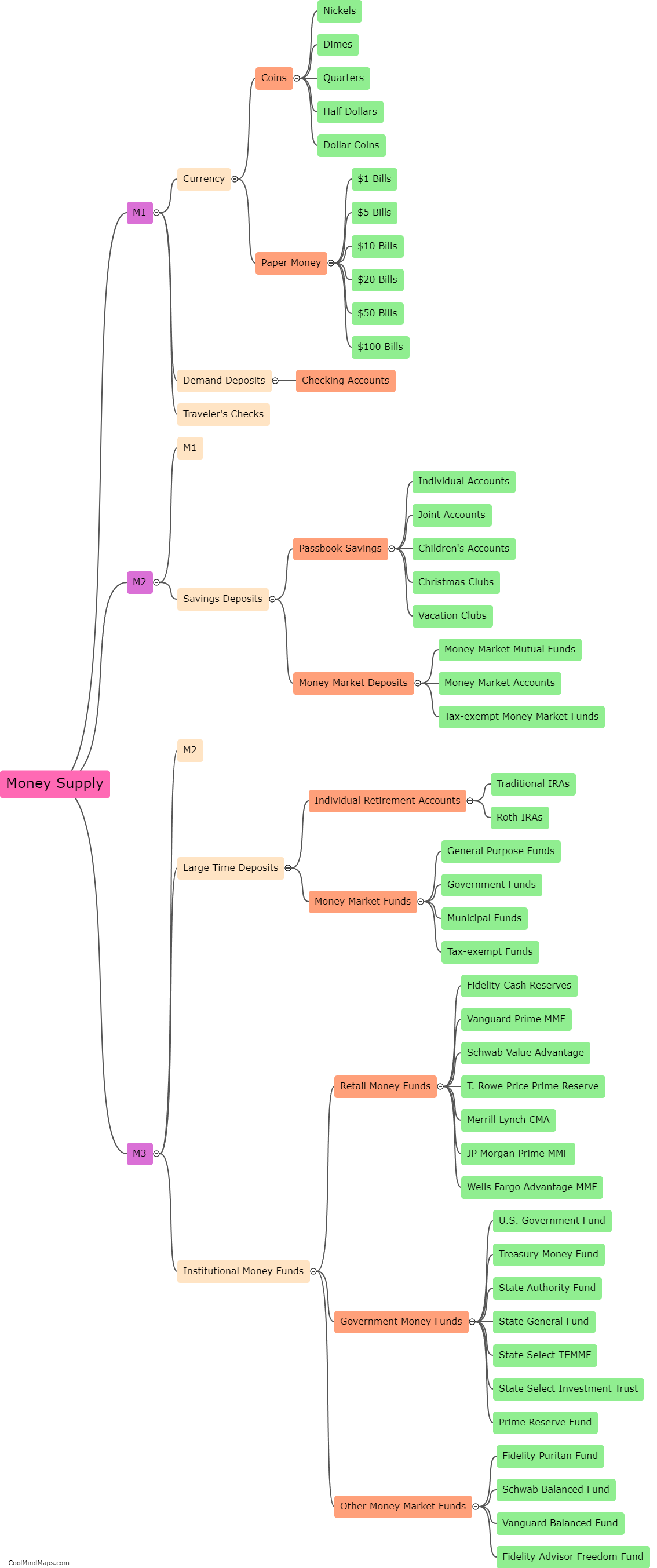How is money created and regulated?
Money is created and regulated by central banks in collaboration with the government. The process begins with the central bank, usually the country's monetary authority, creating money through a process called monetary policy. This involves decisions on interest rates, open market operations, and the creation of new money through techniques such as quantitative easing. The central bank's goal is to achieve price stability, control inflation, and support economic growth. To regulate the money supply, the central bank uses various tools such as reserve requirements and setting interest rates. Additionally, governments also play a crucial role in regulating money through fiscal policy, taxation, and the establishment of various financial regulations. The combined efforts of central banks and governments aim to manage the creation and regulation of money in order to foster a stable and prosperous economy.

This mind map was published on 19 September 2023 and has been viewed 111 times.




